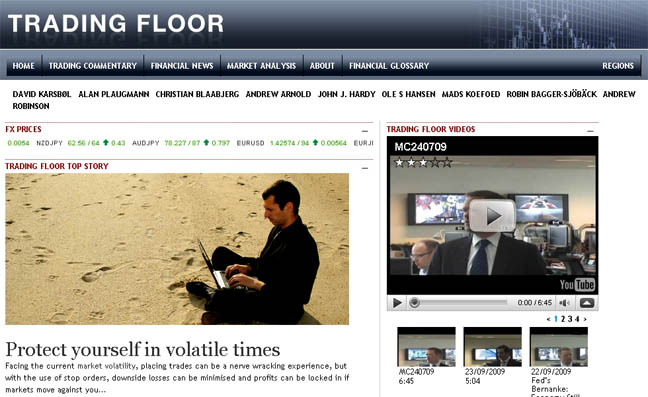Trading Floor has unveiled a new Forex Portfolio Model created by Saxo Bank’s strategy team. The Portfolio model offers a way to reduce total portfolio volatility in the wake of the stock market rally that saw many investors turn away from Forex trading.
“Many investors are staying out of the Forex market – either because they lost money and have given up, or because they simply don’t know where to put their money,” said David Karsbøl, Chief Economist at Saxo Bank and Trading Floor commentator. “The Saxo Bank Forex Portfolio Model is a way of re-activating this idle money by applying them in a low-cost and relatively low risk fashion.”
The portfolio model is based on the Saxo Bank Fundamental Indices that measure the underlying economic strength (contraction or expansion) of 10 currencies: NZD, AUD, CAD, JPY, EUR, GBP, USD, CHF, SEK, and NOK. This should give a theoretical 45 possible currency crosses, but the model subtracts the12 most illiquid and expensive to trade and looks at 33.
The allocation signals are generated by the spreads in the fundamental indices and the idea is to always allocate more capital to the currencies with a relatively strong economic activity (and positive rate outlook) and fund the positions by going short on the currencies with weak economic activity (weak rate outlook).
The model allocates capital after changes in the spreads between the fundamental indices. For example, if the Eurozone Fundamental Index suddenly drops relative to the US Fundamental Index, the model (everything else being equal) would reduce exposure to EURUSD. Additionally, positions are scaled up or down according to the volatility of the currency crosses in question so that the expected risk-adjusted return for positions in EURCHF is the same as for positions in EURCAD.
“The model is always well diversified and is always in the market,” said David Karsbøl. “It is therefore not exposed to timing issues.”
The model doesn’t use stops, since the overall volatility of returns tends to be low (especially on single leverage). One particularly interesting feature is that returns tend to be almost completely uncorrelated to returns in stock markets (correlation = 0.1) and other risky asset classes (correlation to the CRB Index is 0.11).
In back testing since 1991, the model has produced annual returns of 5.34% using single leverage, 10.58% using double leverage and 15.67% with triple leverage.
“Therefore, if the back-testing is indicative of future returns, it would make a lot of sense to use part of one’s portfolio to allocate to the FX Model and thereby decreasing overall portfolio volatility without lowering returns too much or at all, depending on the leverage used.”
Via EPR Network
More Financial press releases



